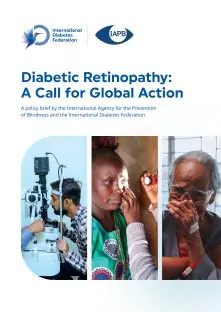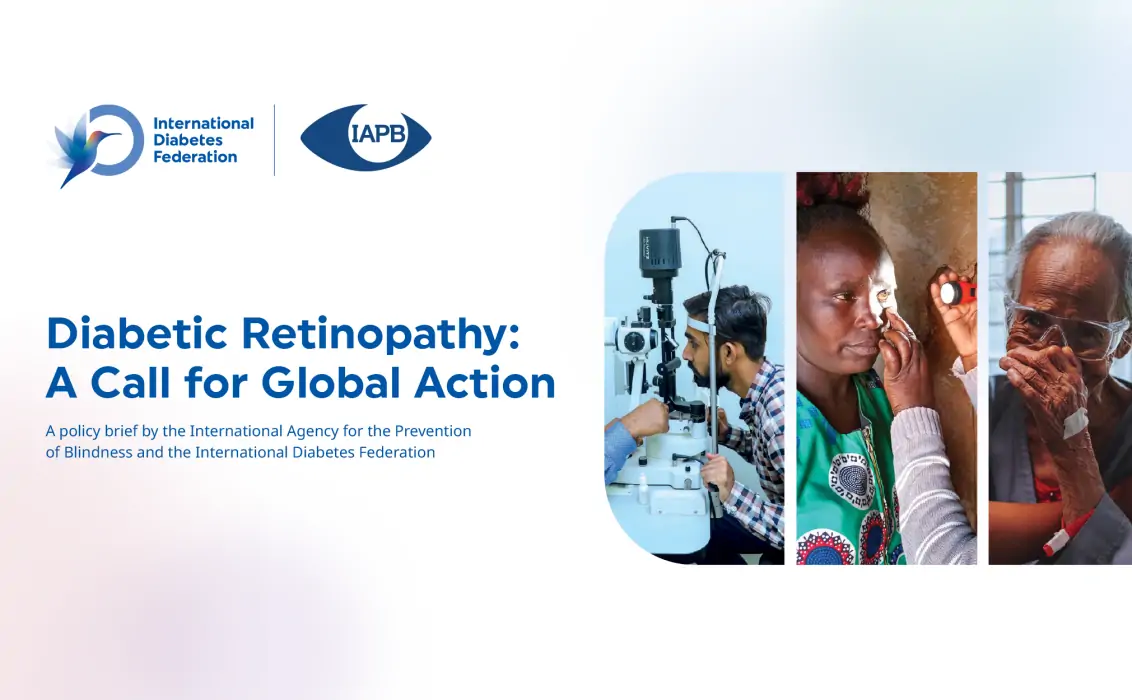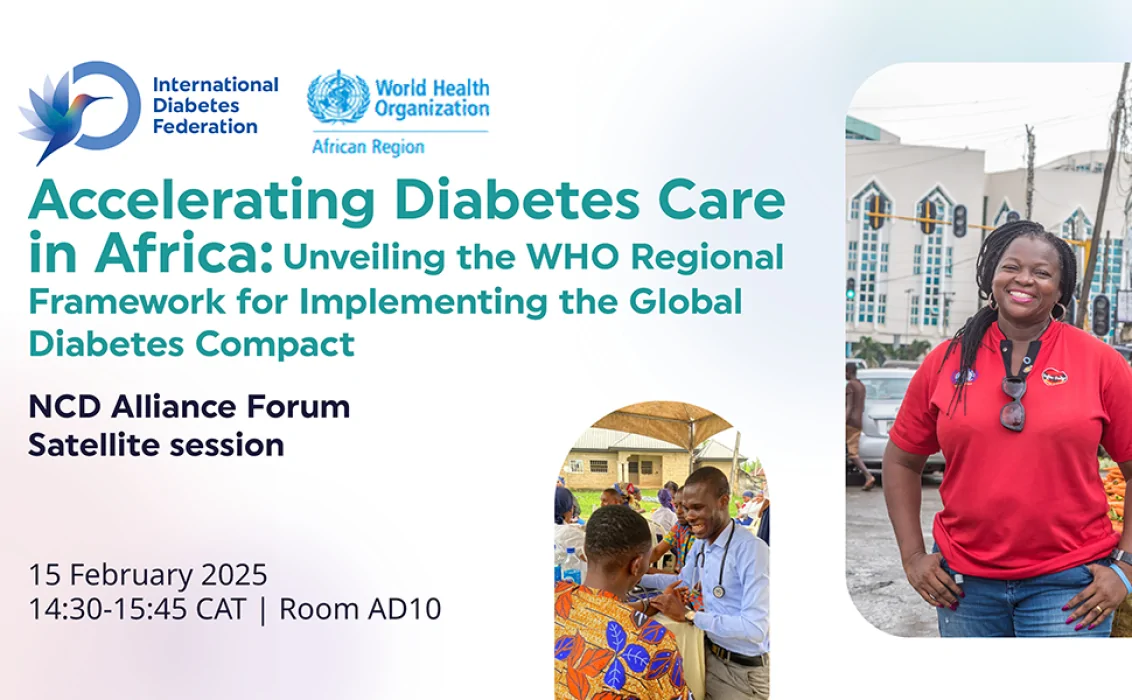The International Diabetes Federation (IDF) and the International Agency for the Prevention of Blindness (IAPB) have released a new policy brief – Diabetic Retinopathy: A Global Call for Action – that advocates for a joint approach to prevent and manage vision loss in people living with diabetes by integrating diabetic retinopathy (DR) care into diabetes policies and national health plans.
DR is the fifth most common cause of moderate to severe vision impairment (VI) and blindness globally, affecting over one in three people with diabetes. The condition usually affects both eyes and results when high glucose levels damage blood vessels in the retina, causing blurred or distorted vision. Other symptoms include the onset of colour blindness or colours appearing faded and poor night vision. If DR goes untreated or treatment is delayed, it can result in VI or blindness. VI reduces mobility, affects mental well-being, and reduces work productivity.
About one in three people with diabetes over the age of 40 already have some signs of diabetic retinopathy, which can cause vision loss, low vision, or blindness.
Key points addressed in the policy brief include the link between diabetes and DR, the economic and social impact of DR on people with diabetes, and the burden on healthcare budgets. Testimonials of lived experiences from people affected by DR further highlight the need for measures to address this critical issue.
Early detection, regular screening and appropriate diabetes management are crucial to prevent vision loss and improve the quality of life for people with diabetes. The IDF-IAPB policy brief provides the first steps to take action to tackle DR and includes a series of recommendations for advocates, healthcare professionals, and policymakers to prevent and manage this common and costly diabetes-related complication.
Download the policy brief below.




